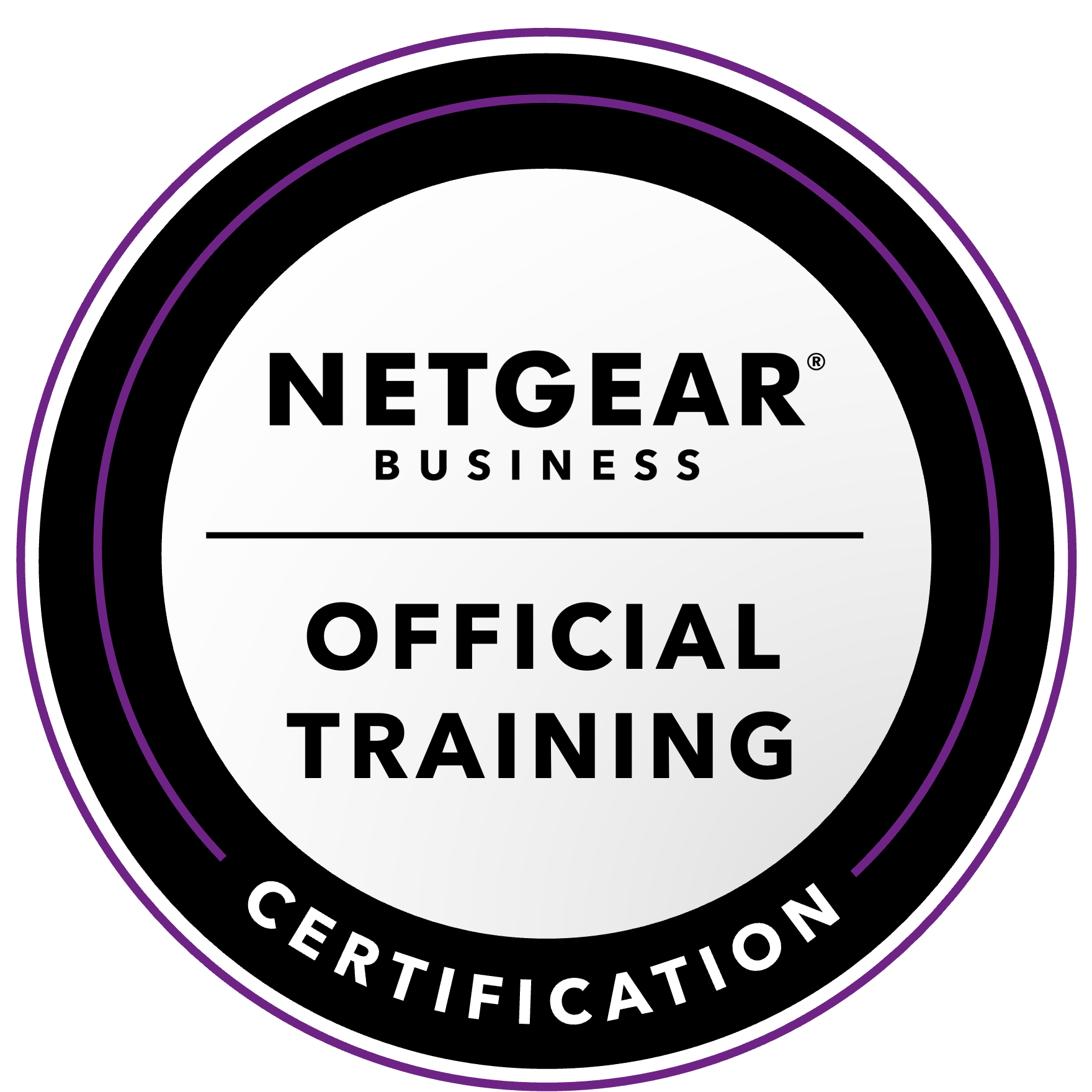NETGEAR is aware of a growing number of phone and online scams. To learn how to stay safe click here.
Forum Discussion
Fizzer
May 15, 2018Aspirant
M4300 for iscsi storage
Hi All,
I am getting quotes for some network storage (Netapp e series, scv3000,msa2050) and a new esxi host to join 2 existing servers. As part of this I am also looking at 10G networking for stor...
- May 15, 2018
Hi Fizzer
Thank you for considering our top of the line M4300 series switches for your network storage applications, and for your questions today.
For iscsi storage traffic to a storage appliance full of SSDs, will the smaller port buffer cause performance problems?
M4300 central port buffer is dynamically shared across ports that are in use, there should be no reason why SSD Storage Appliances would require important port buffering, unless they are Gigabit and you have 10 Gigabit clients or servers accessing them. If that's not the case and if you have 10 Gigabit links across the board between storage and servers, port buffering should't even be used, since all M4300 models are line-rate (non blocking).
Is the correct configuration to have active/passive switches or active/active?
I would largely advise active/active setups, at all times. First, because you can load-balance your traffic based on L2/L3/L4 source or destination strategy (M4300 provides seven different hashing algorithms for best possible interop). Second, because M4300 offer distributed LACP across switches in the same stack with perfect redundancy, should one switch fail. M4300 stacking technology provides Non-Stop Forwarding (NSF): even in case of master management unit failure, the traffic will keep flowing across the stack - no service interruption during failover and failback operations when another switch picks up the master management role.
With active/passive, if we have a failover event, I have seen some people reporting reboots required to failback, is this true?
Maybe with lower-end switches, yes. Active/Passive shouldn't be best practise, anyway. M4300 switches offer NSF (Non-Stop Forwarding) for seamless failover and failback in case of any switch failure in the stack, including the management unit. When you have a pair of M4300 models stacked together and acting as top of rack, you want to use Active/Active instead - with distributed LACP across the pair. To answer your question, if your setup was Active/Passive, I do not envision any issue with a stack of two M4300 switches. They wouldn't interfere with your storage equipment failover detection. But again, Active-Active should be the way to go.
Can we upgrade firmware of the pair without network downtime?
It is possible with some method, see below. In general, NETGEAR Managed switches require a reboot to "apply" a new firmware - this remains valid when you upgrade a stack at once, as a whole. This can done per a schedule using our NMS300 management sofware, or manually during a maintenance window. But, if you have distributed link aggregations (LACP) across your stack, yes, you may want to achieve non-disruptive firmware upgrade. Here's how:
- Download the new version firmware (firmware image) into your stack - in fact into the Stack management unit (master). For instance, download new firmware in IMAGE 1, provided IMAGE 1 is the next image to be used. Ensure that the setting auto-upgrade is ON for Stack Firmware Synchronization in System/Stack menu.
- Don't reboot the Stack selecting "all units", as you would normally do to upgrade all switches in the stack at once. Instead, reboot switches sequentially in the stack following this method:
- In you have multiple switches in your stack, reboot the Slave units one by one (go to Maintenance / Reset / Reset unit xxx only) and wait until it's done each time
- Reboot the Backup Master unit (go to Maintenance / Reset / Reset unit yyy only, with yyy being the backup management unit) and wait until it's done
- Finally reboot the Master unit (go to Maintenance / Reset / Reset unit zzz only, with zzz being the management unit) and wait until it's done
If you have a pair of two switches only in your stack, you can skip the step 3/ above. Thanks to NSF (Non-Stop Forwarding) operation, your distributed LAGs (LACP) across the pair will continuously failover and failback without service interruption, since one switch will be operational at any time.
I've seen some very helpful posts here in the forums; however if we do have a critical network problem, what support options are available in the UK?
Each M4300 model comes with 90 days of Technical Support via phone and email, Lifetime Technical Support through online chat and Lifetime Next Business Day hardware replacement. By registering your switches, you will be able to contact Support - our Level 3 team for UK is based out of Cork, in Ireland. You may want to supplement this service with a ProSUPPORT 1-year or 3-year OnCall service contract for email and telephone support. The ordering information can be found at the end of the Technical Spec section of M4300 datasheet page 51, in ProSUPPORT Service Pack section, just before the switches ordering information.
I hope this helps, please let us know how it goes!
Regards,
LaurentMa
May 15, 2018NETGEAR Expert
Hi Fizzer
Thank you for considering our top of the line M4300 series switches for your network storage applications, and for your questions today.
For iscsi storage traffic to a storage appliance full of SSDs, will the smaller port buffer cause performance problems?
M4300 central port buffer is dynamically shared across ports that are in use, there should be no reason why SSD Storage Appliances would require important port buffering, unless they are Gigabit and you have 10 Gigabit clients or servers accessing them. If that's not the case and if you have 10 Gigabit links across the board between storage and servers, port buffering should't even be used, since all M4300 models are line-rate (non blocking).
Is the correct configuration to have active/passive switches or active/active?
I would largely advise active/active setups, at all times. First, because you can load-balance your traffic based on L2/L3/L4 source or destination strategy (M4300 provides seven different hashing algorithms for best possible interop). Second, because M4300 offer distributed LACP across switches in the same stack with perfect redundancy, should one switch fail. M4300 stacking technology provides Non-Stop Forwarding (NSF): even in case of master management unit failure, the traffic will keep flowing across the stack - no service interruption during failover and failback operations when another switch picks up the master management role.
With active/passive, if we have a failover event, I have seen some people reporting reboots required to failback, is this true?
Maybe with lower-end switches, yes. Active/Passive shouldn't be best practise, anyway. M4300 switches offer NSF (Non-Stop Forwarding) for seamless failover and failback in case of any switch failure in the stack, including the management unit. When you have a pair of M4300 models stacked together and acting as top of rack, you want to use Active/Active instead - with distributed LACP across the pair. To answer your question, if your setup was Active/Passive, I do not envision any issue with a stack of two M4300 switches. They wouldn't interfere with your storage equipment failover detection. But again, Active-Active should be the way to go.
Can we upgrade firmware of the pair without network downtime?
It is possible with some method, see below. In general, NETGEAR Managed switches require a reboot to "apply" a new firmware - this remains valid when you upgrade a stack at once, as a whole. This can done per a schedule using our NMS300 management sofware, or manually during a maintenance window. But, if you have distributed link aggregations (LACP) across your stack, yes, you may want to achieve non-disruptive firmware upgrade. Here's how:
- Download the new version firmware (firmware image) into your stack - in fact into the Stack management unit (master). For instance, download new firmware in IMAGE 1, provided IMAGE 1 is the next image to be used. Ensure that the setting auto-upgrade is ON for Stack Firmware Synchronization in System/Stack menu.
- Don't reboot the Stack selecting "all units", as you would normally do to upgrade all switches in the stack at once. Instead, reboot switches sequentially in the stack following this method:
- In you have multiple switches in your stack, reboot the Slave units one by one (go to Maintenance / Reset / Reset unit xxx only) and wait until it's done each time
- Reboot the Backup Master unit (go to Maintenance / Reset / Reset unit yyy only, with yyy being the backup management unit) and wait until it's done
- Finally reboot the Master unit (go to Maintenance / Reset / Reset unit zzz only, with zzz being the management unit) and wait until it's done
If you have a pair of two switches only in your stack, you can skip the step 3/ above. Thanks to NSF (Non-Stop Forwarding) operation, your distributed LAGs (LACP) across the pair will continuously failover and failback without service interruption, since one switch will be operational at any time.
I've seen some very helpful posts here in the forums; however if we do have a critical network problem, what support options are available in the UK?
Each M4300 model comes with 90 days of Technical Support via phone and email, Lifetime Technical Support through online chat and Lifetime Next Business Day hardware replacement. By registering your switches, you will be able to contact Support - our Level 3 team for UK is based out of Cork, in Ireland. You may want to supplement this service with a ProSUPPORT 1-year or 3-year OnCall service contract for email and telephone support. The ordering information can be found at the end of the Technical Spec section of M4300 datasheet page 51, in ProSUPPORT Service Pack section, just before the switches ordering information.
I hope this helps, please let us know how it goes!
Regards,
Related Content
NETGEAR Academy

Boost your skills with the Netgear Academy - Get trained, certified and stay ahead with the latest Netgear technology!
Join Us!
